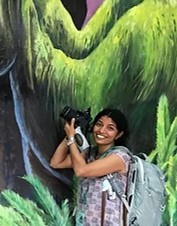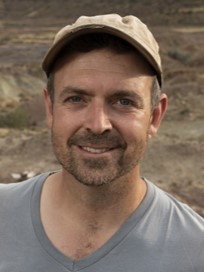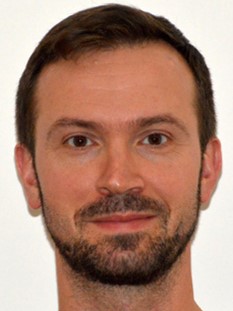SASSB 2022 Webinar Series
WorkshopWe want to hear about your systematics research! The Southern African Society for Systematic Biology is hosting a webinar series to enable sharing of systematic research, both local and international, and to offer an online space for discussion about your systematic biology research, thoughts, & questions. The webinar will be a two-hour session on the First Thursday of the month at 16h00 SA Standard Time/Central Africa Time (UTC+02:00). The first half will be either recorded or live talks by an invited plenary speaker who will share their work on a specific theme, followed by a shorter talk within the same theme. After the talks and a Q&A session, the online space will be held open for 30 minutes for informal discussions and chats about the research presented, or other topics of interest to the systematics community.
For a line-up of speakers, you can also visit the SASSB website. Links will be distributed following registration, so be sure to sign up! Please contact Prof Fanus Venter if you have any questions.
SASSB Youtube channel: Click here
Previous events, themes and speakers
3 June 2021: Theme: Calibrating phylogenetic trees. invited speaker: Dr. Seraina Klopfstein. (Click here to view presentation)
1 July 2021: (Joint session with FABI international series). Theme: Fungal evolution. Invited speaker: Dr. David Hibbett. (Click here to view presentation)
5 August 2021: Theme: Systematics In Angiosperm Taxonomy and Evolution. Invited speaker: Dr. Sandra Knapp. (Click here to view presentation)
2 September 2021: Theme: Biogeography. Invited speaker: Dr. Isabel Sanmartin. (Click here to view presentation)
3 September 2021: Workshop on Bayesian methods in biogeography, presented by Dr. Isabel Sanmartin.
14 October 2021: Theme: Digital taxonomic data. Invited speaker: Donat Agosti, Plazi, Bern, Switzerland.
15 October 2021: Workshop on Data liberation from taxonomic literature using Plazi, presented by Marcus Guidoti, Carolina Socorowicz, and Donat Agosti
17 November 2021: (Join session with SASSB AGM). Theme Bayesian spatiotemporal reconstruction of SARS-CoV-2 spread. Invited speaker: Dr. Philippe Lemey, Rega Institute at KU Leuven, Belgium.
Scheduled events, themes and speakers
7 April 2022: Theme: Palaeosystematics Invited speaker: Prof. Jonah Choiniere
5 May 2022: Theme: Bacterial genomic diversity Invited speaker: Dr. Luis M. Rodriguez-R
2 June 2022: Theme: Plant Systematics and Evolution Invited speaker: Prof. Vinita Gowda
3 November 2022: Theme: The SeqCode, Invited speaker: Dr. Marike Palmer (click here to view presentation)
Upcoming seminar: 3 November 2022 - Time: 16:00 (GMT+2)
Plenary speaker: Marike Palmer, School of Life Sciences, University of Nevada Las Vegas, Las Vegas, NV, USA
Title: SeqCode: Empowering prokaryotic taxonomists to use resources that are appropriate for naming the organisms they study
Registration information
Please fill in the registration form below should you wish to attend the SASSB 2022 Webinar Series. You will be provided with information regarding the seminar for each month via email, thus please ensure to give the correct email address.
REGISTRATION IS NOW CLOSED
Speakers
Seminars for November 3, 2022

Plenary speaker: Dr. Marike Palmer, School of Life Sciences, University of Nevada Las Vegas, Las Vegas, NV, USA
Title: SeqCode: Empowering prokaryotic taxonomists to use resources that are appropriate for naming the organisms they study.
Abstract: With the enormous advances in molecular sequence data generation, microbial taxonomy has progressively evolved towards a hierarchical system strongly rooted in phylogenetics and evolutionary cohesion. As a result of this, genomics has become fully integrated into prokaryotic systematics, which provides the opportunity to start assessing the extent of our exploration efforts into biodiversity space. The genomes of most type strains have been sequenced, genome sequence similarity is widely used for delineation of species, and phylogenomic methods are commonly used for classification of higher taxonomic ranks. As such, microbial taxa identified from environmental metagenomics can be as robustly delineated as their cultivated counterparts. In response to these developments, a new code of nomenclature, SeqCode (The Code of Nomenclature of Prokaryotes Described from Sequence Data), has been developed to allow naming of Archaea and Bacteria using DNA sequences as nomenclatural types. This code is considered a living document, with the goal of serving the broader microbiological community. The SeqCode will allow naming of the enormous uncultivated biodiversity discovered through the aid of metagenomic sequencing and single-cell genomics, fastidious prokaryotes that cannot reasonably be maintained and distributed by culture collections, as well as organisms that cannot be legally transferred between countries, thus facilitating the naming of taxa in every biome on Earth. This will promote synergies between the field and laboratory disciplines of microbiology and stabilize the working language, i.e., nomenclature, of prokaryotic systematists.
Seminars for June 2, 2022

Plenary speaker: Dr. Vinita Gowda, Indian Institute of Science Education & Research, Bhopal, India
Title: Understanding generation, evolution, and maintenance of plant biodiversity in India.
Abstract: Biodiversity refers to the biological diversity in any region, which is often measured using different ecological metrics such as species diversity or abundance. The measuring entity in any of these metric is a “taxa”. The origin, maintenance and extinction of these taxa, therefore, are key to our understanding of how biodiversity is generated and maintained in any region. India is known for its two megadiverse regions: Western Ghats and Eastern Himalayas. I will present one case study from each of these regions that will highlight evolutionary and ecological mechanisms that may be used by plants to create as well as maintain taxonomic diversity. The Eastern Himalayan region is represented by taxa from the NE Indian states, which has a continuous distribution with flora from SE Asia, while the Western Ghats is different because it forms an isolated floristic region (from the NE or SE Asia), although it is historically connected to African flora. Our studies reveal that many diverse plant taxa from these regions may be very young (~7-10 mya), lack clear reproductive isolation boundaries, as well as have a high propensity for polyploidization. Further, abiotic and biotic factors such as the availability of hyper-diverse niches, monsoon intensification, and generalist pollinators also mean that local hybridization events may be common in both these regions and outcrossing may be very common. Our study provides us with an opportunity to understand how incipient speciation may look like in many of these taxa, which may allow us to see how species evolve and create biodiversity in hyperdiverse regions around the world.
Biography: I am an Associate Professor at the Indian Institute of Science Education & Research in Bhopal, India. I did my PhD at the George Washington University in Washington, DC, USA and postdocs at both the National Museum of Natural History, Smithsonian Institution, and Singapore Botanical Gardens. I am an evolutionary biologist and botanist by training and I mostly focus on "plant-centric" projects. My principal interests are to understand the evolution of floral and vegetative traits in plants using molecular, ecological and behavioral tools. Despite its challenges, I also love the wild nature which is why I encourage most projects to be inspired by the forest itself, rather than in shade-houses.
Local speakers:
Speaker: Jessica Minnaar, Wits University
Title: Drivers of species diversification in Galtonia (Hyacinthaceae): a Drakensberg near-endemic genus.
Abstract: The Drakensberg Mountain Centre (DMC) is recognised as a major centre of species diversity and endemism, with climatic, topographic, and edaphic variation across the region promoting the significant levels of biodiversity observed today. However, unlike other major centres of endemism, such as the Cape Floristic Region, few studies have explored the patterns and processes of species diversification in the region. Therefore, investigating the drivers of speciation in Galtonia, a Drakensberg near-endemic genus, contributes to our understanding of the evolutionary processes that have resulted in such a remarkably diverse region. In addition to mapping distribution data from 148 herbarium specimens and field collections of five species, we investigated the likely drivers of speciation in Galtonia by measuring floral and vegetative features and undertook a Principal Components Analysis to infer whether adaptation occurred in response to abiotic or biotic factors. Variation in vegetative habit, leaf shape, and leaf size among Galtonia species is evident, with relatively minor distinctions in floral form, suggesting they evolved in response to abiotic rather than biotic factors. Therefore, climatic and topographical variation along the Drakensberg escarpment appear to play an important role in species diversification in this genus. Additionally, microhabitat specialization to different soils and habitats of the escarpment are likely to have promoted ecological speciation within Galtonia. The disjunct geographic and altitudinal distribution of Galtonia species and differences in habitat indicate that ecological speciation in allopatry and parapatry possibly promoted divergence of its species across the DMC. Galtonia species are characterized by slightly different tepal colours (viz., pale creamy yellow, pale green, and pure white). With regards to biotic factors, relatively few floral differences among Galtonia species suggest that pollinators may not have played an important role in reproductively isolating species. However, the pollinators of Galtonia species, and their role in species diversification has not been formally investigated. No scent was observed in G. regalis or G. candicans during the day, a characteristic associated with a bird pollination syndrome. Malachite sunbirds have been observed visiting G. regalis and G. princeps during the day, and night observations are yet to be conducted. Therefore, the main floral visitors, and potential pollinators, and functional floral traits (nectar properties) of Galtonia species are being investigated to see whether they differ between sister species and are correlated with the main floral visitors respectively. Preliminary results from an investigation during the 2021/2022 summer flowering season will be presented.
Speaker: Kamil Frankiewicz
Title: Big travels of small herbs: what drives diversification of celery and its cousins.
Abstract: Diversification rates may be affected by extrinsic (e.g. availability of ecological niches) and intrinsic factors. Among them, life form may be instrumental because herbaceous plants have shorter generation times and more pronounced r reproductive strategy than their woody relatives. Tribe Apieae (Apioideae, Apiaceae) – to which celery, dill or parsley belong – are well-suited to study the effects of life form on diversification as it represents a considerable variation of life spans, growth forms, and reproductive strategies. Combining the analysis of diversification rates with reconstruction of ancestral traits and estimation of biogeographic scenarios, we studied what drives the speciation (and extinction) in this group of high culinary (and economic) significance.
Seminars for May 5, 2022

Plenary speaker: Dr. Luis M. Rodriguez-R, Department of Microbiology & Digital Science Center (DiSC), University of Innsbruck, Austria
Title: Indexing the Genomic Diversity of Archaea and Bacteria with MiGA, the Microbial Genomes Atlas.
Abstract: During the past decade the number of publicly available sequenced prokaryotic genomes has grown at an unprecedented rate. Yet, the information behind this trove of data remains difficult to access, and genome-based comparisons against comprehensive databases remain technically cumbersome and computationally intensive. To address these issues, we have developed MiGA, the Microbial Genomes Atlas, a genomic data analysis framework integrating best practices in genome processing and quality evaluation, fast genome-based querying of reference databases, and robust statistical tests of taxonomic classification and novelty. In order to democratize access to the MiGA framework, we have also implemented user-friendly interfaces including web-based browsing and administration for all users, a complete command-line interface for intermediate users, and a fully documented Ruby API for advanced users. In addition, we have deployed MiGA to a variety of environments that users can access freely including MiGA Online for detailed manual curation of individual entries and MiGA @ XSEDE for high-throughput genome processing. In addition, we use the various MiGA features to curate and maintain reference genome collections including all determined genomes from type material of named species (TypeMat), a dereplicated set of genomes determined by culture-independent techniques such as single cell genomics and genome-resolved metagenomics (Uncultivated), 8 environment-specific genome collections, and over 700 collections for specific taxonomic groups, allowing the accurate, precise, and comprehensive taxonomic classification of query genomes. To date, MiGA has processed over 50 thousand jobs from users around the globe (including 1500 registered users), the MiGA Online webserver has been used in over 250 publications, and the framework is actively being ported to additional environments including high-performance computing centers and cloud computing platforms. The MiGA codebase, its interfaces, and the online deployments are available at http://microbial-genomes.org/.
Biography: Luis M. Rodriguez-R is an Assistant Professor at the Department of Microbiology & Digital Science Center (DiSC), University of Innsbruck, Austria.
Local speakers:
Speaker: Catherine Brink, University of Pretoria
Title: Genetic structure and diversity of a Salinibacter ruber population.
Abstract: The patterns of diversity that shape and maintain microbial communities are still poorly understood due to the complexity of natural environments and the difficulties associated with cultivating many microbial species. Extreme environments, with limited resources and interspecies variation, provide a way to overcome some of these barriers and allow the study of evolutionary processes such as selection and recombination within populations. In this study, we consider a dataset of 63 Salinibacter ruber isolate genomes as well as a metagenome from the same solar saltern sample and show that the population exists in a distinct, reproducible structure that is supported by multiple phylogenetic and numeric hypotheses. The structure is made up of approximately six monophyletic clades that are equally abundant in the metagenome and may provide the perfect model to study the processes that are responsible for creating and maintaining microdiversity in extreme environments.
Speaker: Dr. Diego Castillo, University of Pretoria
Title: Genome resolved metagenomics reveals widespread microbial chemolithoautotrophic potential in the Southern Ocean.
Abstract: Marine microbiota are essential mediators of biogeochemical cycles. In the Southern Ocean, nutrient recycling is tightly coupled to the availability of trace elements. Yet, despite their importance, we lack key insights regarding the metabolic potential of bacteria and archaea in this region. This knowledge deficit is particularly true for the dark ocean, where microbiota have profound impacts on local and global food webs. We constructed 628 metagenome-assembled genomes (MAGs) and explored the evolutionary dynamics and metabolic potential bacteria and archaea in aphotic zones of the Southern Ocean. These MAGs demonstrate capacity for inorganic carbon fixation using the Calvin- and Arnon-Buchanan cycles. Metapangenomic analyses revealed that several genes linked to the oxidation of reduced nutrients, including ammonia, nitrite, and thiosulfate, were shared by microbiota throughout the aphotic water column through horizontal gene transfer. MAGs with chemolithoautotrophic lifestyles including Nitrosophaeria, Gammaproteobacteria and SAR324 were ubiquitously distributed throughout the dark SO. These chemolithoautotrophic genomes also harbour the potential for carbohydrate degradation, suggesting mixotrophy may be an important metabolic strategy in this region. Altogether, these results further our understanding of the functional microbial structure and metabolic capabilities of the largest marine carbon sink on Earth.
Seminars for April 7, 2022

Plenary speaker: Prof. Jonah Chioniere – Evolutionary Studies Institute, University of the Witwatersrand
Title: Dinosaurs of darkness: how owl-like senses independently evolved in the ancestors of birds
Abstract: Living owls are the quintessential night hunters, using visual and auditory adaptations to catch prey even in complete darkness. These traits are rare in living birds, but could they have evolved in their ancestors - theropod dinosaurs? Understanding sensory evolution is challenging in the fossil record, however, and doing so requires novel means of data collection. To examine this question, we CT scanned the skulls of more than 100 birds and non-avian dinosaurs, and used these scans to reconstruct the inner ear, parts of which reflect auditory capabilities. We also collected information on the maximum size of the pupil using small bones of the reptile eye known as scleral ossicles. When combined, these two proxies allowed us to confidently infer that alvarezsaurs, a bizarre group of non-avian dinosaurs, had hearing and vision that were well-suited for nocturnal habits. We hypothesized that these adaptations would have served them well in the sandy desert environments of the Cretaceous of Mongolia, where harsh conditions and cryptic prey posed challenges for survival.
Biography: Jonah Choiniere is the Professor of Comparative Palaeobiology at the Evolutionary Studies Institute of the University of the Witwatersrand. He studies the systematics and evolution of dinosaurs, crocodylomorphs, and their early branching reptilian ancestors. He leads field-based research excavations in South Africa and Zimbabwe to collect new fossil species. His overarching interest is in understanding the effects of the End-Triassic Mass Extinction on planetary biodiversity, which happened 200mya and ushered in the Age of the Dinosaurs.
Additional speakers:
Speaker: Dr. Viktor J Radermacher: Evolutionary Studies Institute, University of the Witwatersrand and Department of Earth and Environmental Sciences, University of Minnesota,USA
Title: Lineage origin, historical migration patterns, and the contributions of geographic proximity and ecological filtering to dispersal in an African-centred paper daisy lineage.
Abstract: Ornithischia is one of the three major clades of dinosaurs and includes well-known and cherished taxa like the horned Triceratops, spiked Stegosaurus, and crested duck-billed Parasaurolophus. The last half a century has seen considerable strides in elucidating the biology of dinosaurs, elevating fossils from interesting rocks into living breathing animals. However, much of this research effort has been concentrated on the long-necked sauropodomorphs and carnivorous theropods – the precursors to modern birds – rendering Ornithischia neglected by comparison; a fate exacerbated by a scant early fossil record for the clade. Furthermore, while we know many ancillary aspects of ornithischian life history like dietary preferences and social behaviours, a satisfying understanding of their ventilatory anatomy remains elusive – an area of study pivotal in bringing other dinosaurian lineages into the modern paradigm as dynamic, energetically demanding animals. We present a new specimen of the early-branching South African ornithischian Heterodontosaurus tucki that preserves a suite of new and unexpected postcranial material. Visualised using phase-contrast enhanced synchrotron microCT data, this new anatomy is pertinent in providing a high-resolution glimpse into the early evolution of this group, allow us to posit a step-wise hypothesis for their ventilatory evolution, and better understand the macroevolutionary constraints imposed on the lineage’s subsequent 130 Million year radiation.
Speaker: Dr Kimi Chapelle, American Museum of Natural History, New York, New York
Title: A quantitative method for inferring locomotory shifts in amniotes during ontogeny and its application to dinosaurs.
Abstract: Evolutionary transitions between quadrupedal and bipedal postures are pivotal to the diversification of amniotes on land. Within Dinosauria there are at least four instances of lineages evolving quadrupedality from bipedality. Similarly, developmental, or ontogenetic postural shifts from quadrupedality to bipedality have been hypothesized in several dinosaur taxa, including the iconic southern African basal sauropodomorph dinosaur Massospondylus carinatus Owen (1854). However both non-destructive and quantitative methods for testing this in extinct species have been lacking. We extend such a method for reliably inferring posture in tetrapods to the study of ontogenetic postural transitions using measurements of proportional limb robusticity. We apply this to the ontogenetic series of living and extinct amniotes, focusing on dinosaurs. Our method correctly predicts the general pattern of ontogenetic conservation of quadrupedal and bipedal postures in many living amniote species and infers the same pattern in most dinosaurs. We infer a transition from early-ontogenetic quadrupedality to late-ontogenetic bipedality in only two dinosaur taxa. The phylogenetic positions of these shifts suggest that heterochrony may play a role in the macroevolution of posture, at least in dinosaurs.
Seminars for November 17, 2021

Plenary speaker: Dr. Philippe Lemey, Rega Institute at KU Leuven, Belgium.
Title: Evolutionary origins of SARS-CoV-2 and tracking its spread using phylodynamic data integration.
Abstract: SARS-CoV-2 genome data has been crucial to track the rapidly changing COVID-19 epidemic. The accumulation of high data volumes over short time makes time-consuming Bayesian phylogenetic inference impractical for real-time analyses. However, SARS-CoV-2 genomes come with a number of other challenges that can be confronted by Bayesian phylodynamic approaches. Specifically, these methods can take advantage of data integration opportunities and result in more realistic spatiotemporal reconstruction of SARS-CoV-2 spread. This will be demonstrated through the incorporation of global mobility data, individual travel histories and upsampled diversity in phylogeographic reconstructions. Such approaches allow addressing important epidemiological questions, such as to what extent lineage persistence and new introductions contributed to the COVID-19 resurgence in Europe late summer 2020. Various ways of making Bayesian inference more efficient and scalable will be highlighted in different settings.
Biography: Philippe Lemey holds a PhD degree in Medical Sciences from KU Leuven, Belgium (2005), and was a Marie-Curie postdoctoral fellow in the Evolutionary Biology group at the Department of Zoology, University of Oxford, from 2005 to 2007. Philippe is now a full Professor at the Rega Institute, KU Leuven, where he studies the evolutionary processes that shape viral genetic diversity, spanning large-scale epidemic processes as well as small-scale transmission histories and within-host evolutionary processes. He is the senior editor of the second edition of the Phylogenetic Handbook and a two-time ERC grant awardee. His team contributes to the BEAST software (http://beast.community) for phylogenetic and phylodynamic reconstruction, with applications to many viruses, most notably HIV, influenza, Ebola, Lassa virus and SARS-CoV-2.


